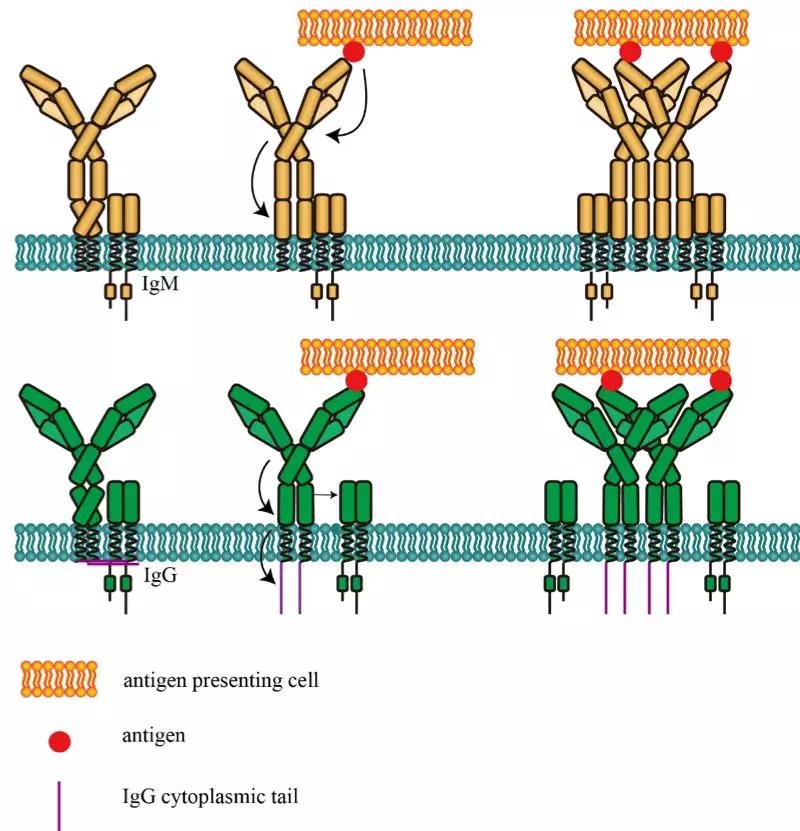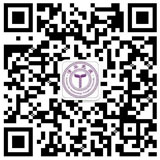On July 10th 2019, a research team led by Dr. Wanli Liu from Institute of Immunology, Tsinghua University published a research article entitled “Conformational change within the extracellular domain of B cell receptor in B cell activation upon antigen binding” in eLife. In this study, the group reported conformational changes within extracellular domain of B cell receptor induced by antigen-binding in the early stage of B lymphocyte activation.
B lymphocyte, as an important participant in the process of antibody immune response maintaining human health, recognizing pathogens through its membrane expressed B-cell receptor (BCR) to trigger downstream signaling. The molecular mechanism through which BCR extracellular antigen-binding signal is transmitted across the membrane to the BCR intracellular domain for the purpose of B lymphocyte activation remains still unclear. In this research, by combining site-specific labeling methodology and fluorescence resonance energy transfer (FRET)-based assay, conformational changes within extracellular domain of BCR upon monovalent membrane antigen engagement were investigated through high speed high resolution imaging system based on total internal reflection fluorescence microscopy and fluorescence lifetime imaging microscopy. Conformational change within heavy chain of membrane-bound immunoglobulin (mIg) was observed in IgM-BCR upon antigen-binding, while antigen-binding induced conformational change in the spatial relationship between mIg and Igβ of IgG-BCR. These conformational changes were correlated with the strength of BCR activation. In addition, the distinct conformational change between IgM- and IgG-BCR was dependent on the cytoplasmic tail of mIg. These results provide a molecular explanation for how antigen engagement initiates BCR-mediated B lymphocyte activation: antigen-binding induces a series of conformational changes within the BCR complex, transducing the activation signal to the intracellular domain of BCR to trigger downstream pathways in B lymphocyte. Additionally, these results provide new insights for the study of the regulation mechanism of B lymphocyte immune activation, helping people to further understand how B lymphocyte activation is initiated and providing important information on the pathogenesis of related diseases.
Dr. Wanli Liu’s lab has been focusing on basic immunology research of B lymphocyte, integrating an interdisciplinary platform to investigate regulatory mechanisms of B cell activation and pathogenesis of related immune diseases. After the establishment of his own lab in 2012, Dr. Liu has made some achievements in pathogenesis study of B cell related autoimmune diseases (Science, 2018; J Exp Med. 2016; Leukemia 2019&2019; Cell Research 2018; J Immunol, 2014&2017); mechanical force sensitivity and threshold for the activation of BCR (J Cell Biol, 2018; Science Signaling, 2018; eLife, 2015&2017; Eur J Immunol, 2015; J Immunol, 2013); B cell activation regulation through lipid metabolism network (Cell, 2018; Science Immunology, 2017; Cell Reports, 2017; Nature Communications, 2015); B cell activation regulation through BCR complex (Science Advances, 2019; PNAS, 2016; Chemical Science, 2016; J Leukoc Biol, 2015).
The study is funded by the National Science Foundation of China, the Ministry of Science and Technology of People's Republic of China. Zhixun Shen, a PhD student from School of Life Sciences, Tsinghua University is the first author. Sichen Liu, a PhD student from School of Life Sciences, and Xinxin Li, a postdoc from School of Life Sciences are the co-first authors. Dr. Wanli Liu is the corresponding author of this article.

See more: https://elifesciences.org/articles/42271

Copyright © 2017 Institute for Immunology Tsinghua University
Contact Address: Room D302, Medical Science Building, Tsinghua University, Beijing 100084, China
Tel: (86) 10-62776420 Fax: (86) 10-62776420
